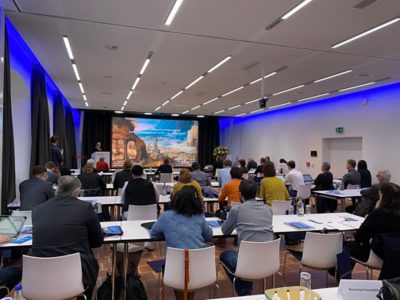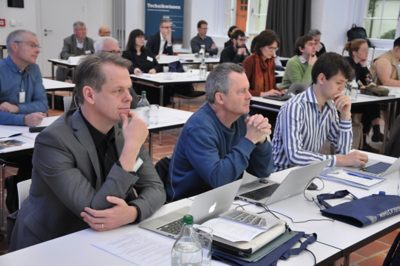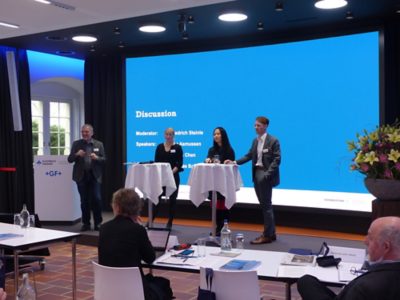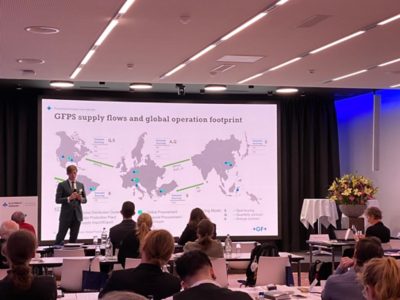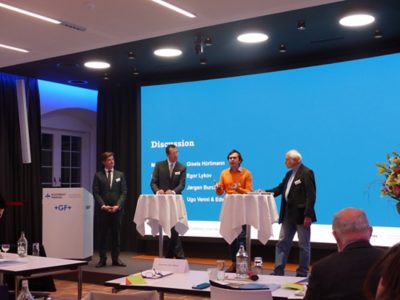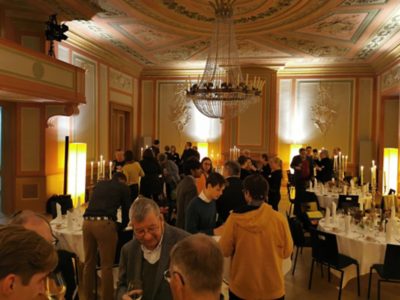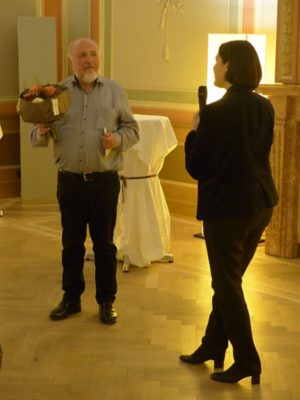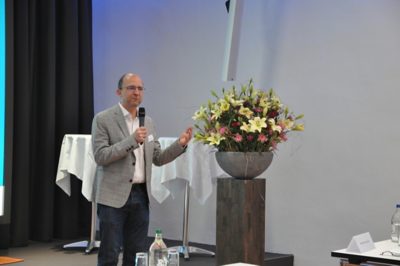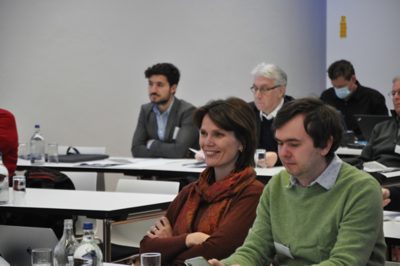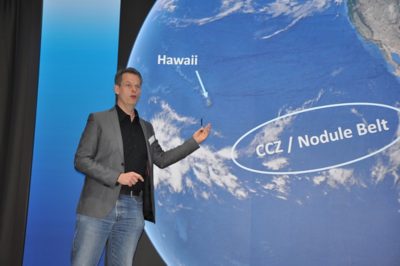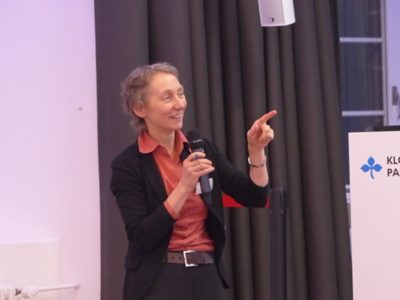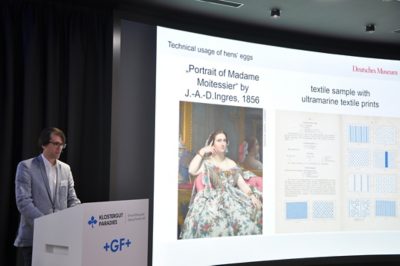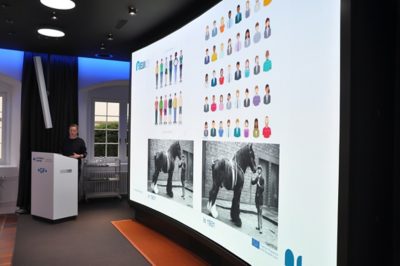Raw Materials. Natural Resources in History
12 and 13 November 2021 in Schlatt, Switzerland
On November 12 and 13, the Iron Library held its 42nd History of Technology Conference. Over 50 participants from 10 different countries made their way to the Klostergut Paradies to contribute to a thought-provoking exchange about the histories of raw materials.
The event kicked off with a well-attended public lecture by Reinhold Reith on Thursday evening in the Rathauslaube, organized in cooperation with the Schaffhauser Vortragsgemeinschaft. The lecture and the subsequent reception at the Kronenhof set the tone for the following days of lively discussion in a collegial atmosphere.
At the official opening of the conference on the Friday, Franziska Eggimann, GF corporate archivist and managing director of the Iron Library Foundation, gave a warm welcome on a cold November morning in Paradies.
Over the next two days, 18 speakers gave presentations on many different facets of the history of natural resources. Topics ranged from a commodity chain analysis of zinc in early modern China (Hailian Chen, Leipzig) to the GDR's efforts to recultivate mining landscapes (Martin Baumert and Torsten Meyer, Bochum) to current discussions of the concept of resources based on the checkered history of the manganese tuber (Ole Sparenberg, Karlsruhe). Ugo Venni and Edward Yanchevski from GF Piping Systems gave an insight into the complex raw material procurement of a global manufacturing industrial company and the current challenges that are currently affecting supply chains.
The presentation provided a contemporary counterpoint to the historical perspectives of the other presentations, and in the ensuing discussion, this made recurring questions and parallels to the past all the more apparent. The panels, moderated by the Scientific Advisory Board, combined a wide variety of topics, and the audience contributed to the diversity of perspectives with incisive questions drawn from years of experience in industry and academia. The different approaches of the papers showed the complexity of the history of raw materials, and Ines Prodöhl summarized this as concisely as the commonalities between the topics, and gave an outlook on the future of research.
The undisclosed highlight of the meeting was the visit to the neighboring Kubrix brickworks in Paradise. The tour offered the opportunity to go through all the steps from the preparation of the local raw materials to the finished product - in the truest sense of the word.
On Friday evening, a dinner was held in the opulent ambience of the Zunftsaal zum Rüden, where Reinhold Reith was bidden farewell as a long-standing and valued member of the scientific advisory board of the conference. His successor in the advisory board is Marcus Popplow, professor at KIT in Karlsruhe. He already took on an active role as moderator at this conference. Together with Gisela Hürlimann (TU Dresden) and Friedrich Steinle (TU Berlin), the two other members of the advisory board, he will help to shape the content of future conferences.
There was great pleasure in bringing our guests together for two stimulating days at Klostergut Paradies after a year's delay - all the more so because everyone visibly enjoyed the personal encounters after a long time.


